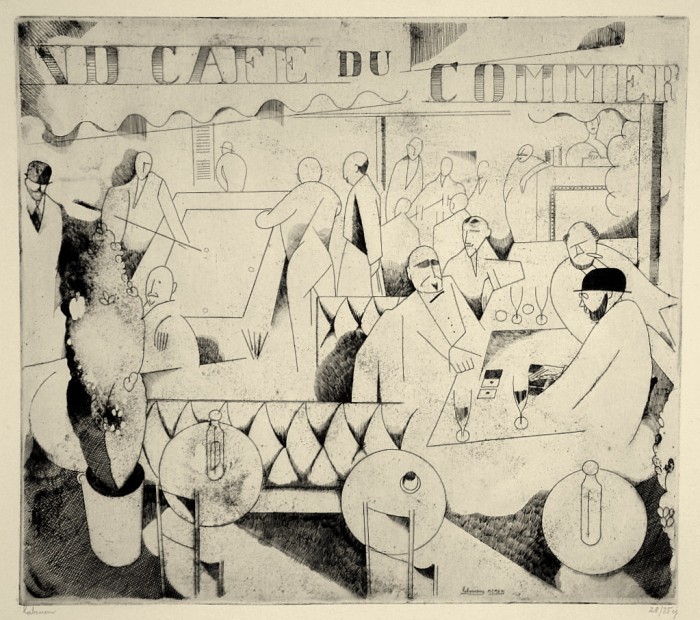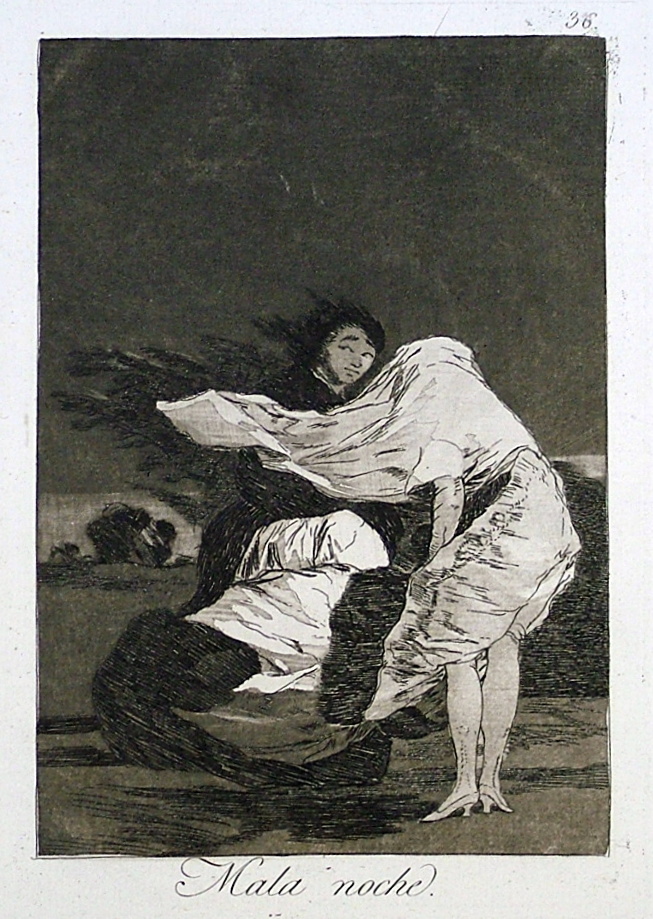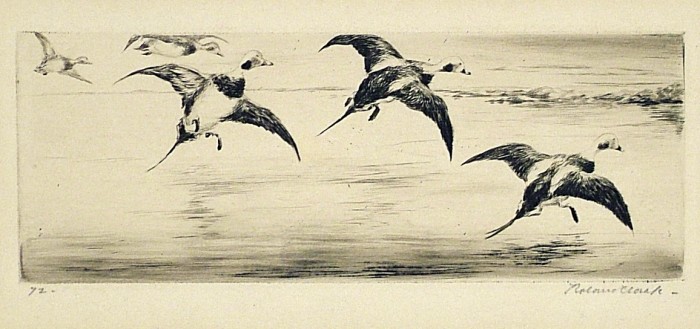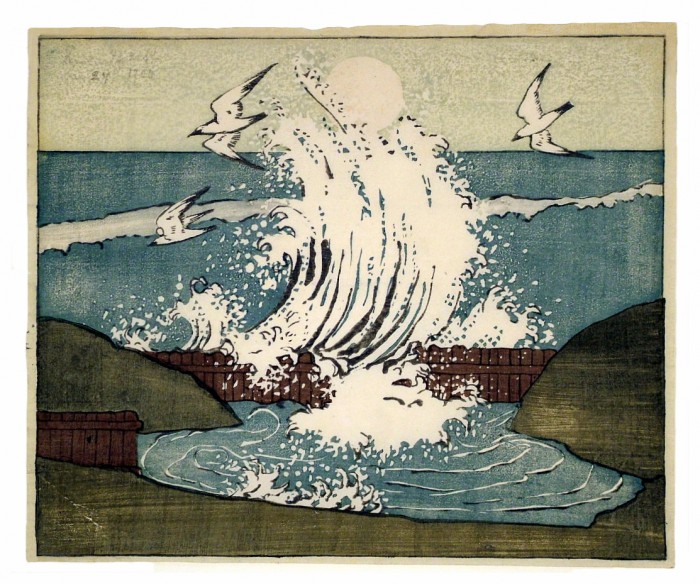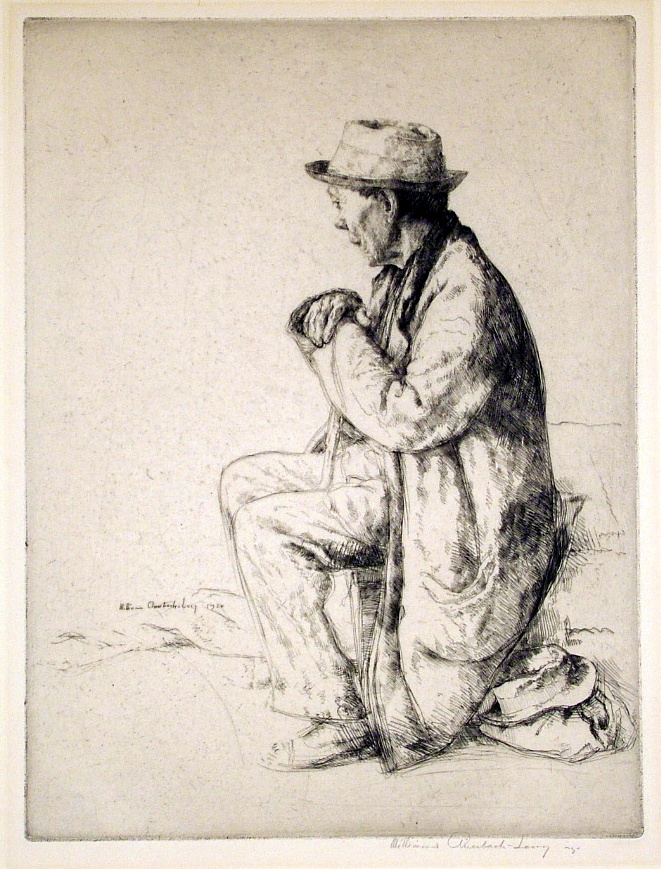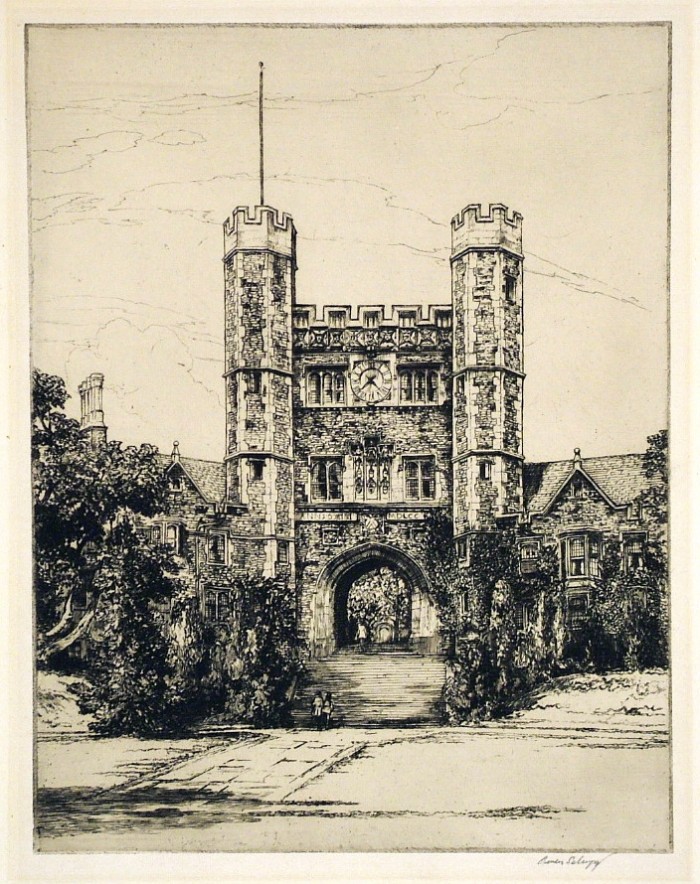
William Auerbach-Levy (1889-1964), The Troubadour, c. 1935, etching in dark brown ink with plate tone, signed in pencil lower right and inscribed “imp”, also inscribed “1st State” lower left. In very good condition, with margins, 8 1/4 x 6, the sheet 11 1/2 x 8 inches.
Provenance: ex Coll: Cortland Field Bishop (1870-1935) (Lugt 2770b, with his stamp verso)
A fine impression of this rare print.
Although inscribed 1st state we have seen another impression without the player’s right hand, and before some shading on the other hand. So this may be a second state.
This is a portrait of a young Roi Partridge, the California etcher (1888-1984), done while the two artists were roommates in Paris.
William Auerbach-Levy was born William Auerbach in Brest-Litovsk, Russia, on February 14, 1889. His parents adopted the surname of Levy after their arrival in the United States when William Auerbach was about five years old.
Auerbach-Levy gained notoriety both as the preeminent caricaturist of his time and as a fine and established painter and etcher. His caricatures of prominent people caused Alexander Woolcott, who wrote that, “The true gift of caricature is rare”, to rank Auerbach-Levy among the few finest exponents of the art.
His caricatures of famous people, including Charles W. Hawthorne, Franklin P. Adams, Hayward Broun, H.L. Mencken, Ring Lardner and Will Rogers, appeared during Auerbach-Levy’s lifetime in illustrations from “The New Yorker “Profiles”, “The New York Post,” “The Brooklyn Eagle,” “Colliers Magazine,” “Esquire Magazine,” “The Christian Herald” and many other preeminent publications of his time.
Other notable caricatures by Auerbach-Levy include Babe Ruth, the Shuberts, comedian Mort Sahl, lngrid Bergman and Frank Sinatra, A book of his caricatures, “Is That Me?”, was published by Watson and Guptill in 1948.
Concurrent with his caricature work, Auerbach-Levy continued in his studio work, producing many paintings and etchings, and was awarded a number of prizes in those fields.
As both a pupil and teacher at the National Academy of Design, he also studied at the Julian Academy in Paris under Jean Paul Laurens. He was a member of the American National Academy, Salmagundi Club of Chicago, and prize winner at the Detroit Jewish Center.
In 1929, he was made the recipient of a Guggenheim Fellowship. Works by Auerbach-Levy were included in the “Fifty Prints of the Year” collections of 1931 and 1933. He was winner of the Isaac N. Maynard Prize for portraiture (1925), Prize-Jewish Centre Exhibition (1926) and Prizes Chicago S.E., as well as the Isidor Prize from the Salmagundi Club; Lewis First Prize for Caricature PAFA (1927).
His works are found in the permanent collections of the Library of Congress, Chicago Art Institute, Boston Art Museum, Detroit Institute of Arts, Worcester Art Museum, Honolulu Academy of Fine Ads, Print Room of the New York Public Library and the Carnegie Institute of Pittsburgh.
An extensive collection of his caricatures, paintings, drawings and etchings were acquired by the National Portrait Gallery in Washington D.C., and are a part of its permanent collection.
Credit:
Falk, Peter, “Who Was Who in American Art, 1564-1975”
